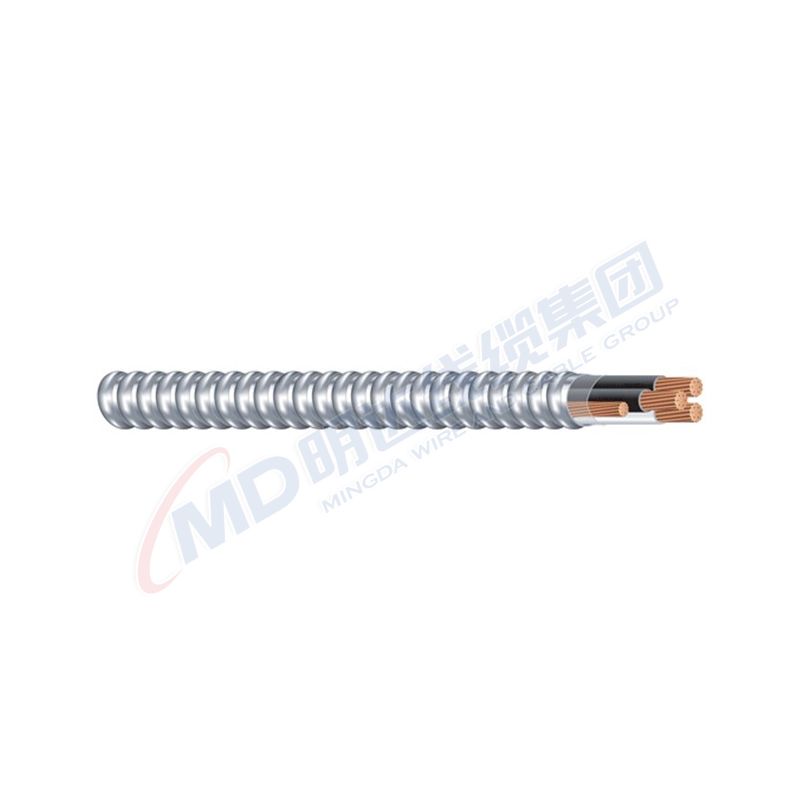Aluminium Alloy Conductor Cable: Everything You Need to Know
Aluminium alloy conductor cables are an essential component of modern electrical infrastructure, providing a reliable and cost-effective solution for power transmission and distribution. In this comprehensive guide, we'll explore everything you need to know about aluminium alloy conductor cables, from their construction and advantages to their applications and environmental impact.
What are Aluminium Alloy Conductor Cables?
Aluminium alloy conductor cables, also known as AAC (All Aluminium Conductor) cables, are electrical cables made from high-strength aluminium alloy strands. These cables are designed to efficiently transmit electrical power over long distances while offering numerous advantages over traditional conductor materials.

Importance and Applications
Aluminium alloy cables find wide-ranging applications in various industries, including electrical utilities, telecommunications, and transportation. They are commonly used in overhead power transmission lines, underground cable networks, and renewable energy projects due to their lightweight design and superior conductivity.
Advantages of Aluminium Alloy Conductor Cables
A. Lightweight and Flexibility
One of the primary advantages of aluminium alloy conductor cables is their lightweight construction. Compared to copper cables, aluminium alloy conductors are significantly lighter, making them easier to install and transport. Additionally, their flexibility allows for easier handling and installation in tight spaces.
B. Cost-effectiveness
Aluminium alloy conductor cables offer a cost-effective solution for power transmission and distribution systems. The lower cost of aluminium compared to copper makes these cables more affordable, resulting in overall cost savings for utility companies and end-users.
C. Corrosion Resistance
Aluminium alloy conductor cables are highly resistant to corrosion, making them suitable for use in harsh environmental conditions. Unlike traditional copper cables, aluminium alloy conductors do not rust or degrade when exposed to moisture, chemicals, or extreme temperatures, ensuring long-term reliability and performance.
D. High Conductivity
Despite being lighter than copper, aluminium alloy conductor cables maintain high electrical conductivity, allowing for efficient power transmission over long distances. Their excellent conductivity properties help minimize power losses and voltage drops, resulting in improved energy efficiency and cost savings.
Types of Aluminium Alloy Conductor Cables
AAAC (All Aluminium Alloy Conductor)
AAAC cables are composed of high-strength aluminium alloy strands twisted together to form a single conductor. These cables are widely used in overhead power transmission and distribution lines due to their lightweight design and excellent conductivity.
ACSR (Aluminium Conductor Steel Reinforced)
ACSR cables consist of a central steel core surrounded by aluminium alloy strands. This construction provides the cables with added strength and mechanical support, making them suitable for use in high-tension overhead power lines.
ACCC (Aluminium Conductor Composite Core)
ACCC cables feature a composite core made from carbon or glass fibers embedded in an aluminium matrix. This innovative design enhances the cables' strength, allowing for increased power transmission capacity and reduced line sag in overhead installations.
Manufacturing Process of Aluminium Alloy Conductor Cables
Alloy Selection and Composition
The manufacturing process begins with the selection of high-quality aluminium alloys optimized for electrical conductivity and mechanical strength. These alloys are carefully blended to achieve the desired properties required for specific applications.
Extrusion Process
Once the alloy composition is finalized, the aluminium strands are extruded through a series of dies to form uniform conductor wires. The extrusion process ensures consistent wire diameter and electrical conductivity, critical for maintaining cable performance.
Testing and Quality Control
Throughout the manufacturing process, aluminium alloy conductor cables undergo rigorous testing and quality control measures to ensure compliance with industry standards and specifications. Various tests, including tensile strength, conductivity, and insulation resistance tests, are conducted to verify the cables' performance and durability.
Applications of Aluminium Alloy Conductor Cables
A. Overhead Power Transmission Lines
Aluminium alloy conductor cables are commonly used in overhead power transmission lines to efficiently transmit electricity over long distances. Their lightweight design and high conductivity make them ideal for minimizing power losses and optimizing energy transmission.
B. Underground Power Distribution
In urban areas and densely populated regions, aluminium alloy conductor cables are often used for underground power distribution networks. These cables offer superior corrosion resistance and durability, ensuring reliable electricity supply to residential, commercial, and industrial areas.
C. Renewable Energy Projects
With the increasing emphasis on renewable energy sources such as wind and solar power, aluminium alloy conductor cables play a vital role in connecting renewable energy generation facilities to the grid. Their lightweight design and high conductivity help maximize energy efficiency and reduce environmental impact.
D. Railway and Transportation Systems
Aluminium alloy conductor cables are also utilized in railway and transportation systems for powering trains, trams, and electrified infrastructure. Their lightweight construction and flexibility make them ideal for overhead catenary systems and third rail applications, providing efficient and reliable power supply for public transportation networks.
Future Trends and Innovations
Research and Development in Aluminium Alloy Conductor Technology
Ongoing research and development efforts continue to advance the field of aluminium alloy conductor technology, with a focus on improving conductivity, strength, and durability. Emerging innovations, such as nanostructured alloys and composite materials, hold the potential to further enhance the performance and efficiency of aluminium alloy conductor cables in the future.
Integration with Smart Grid Systems
As smart grid technologies become increasingly prevalent, aluminium alloy conductor cables are being integrated into advanced power distribution networks. Smart grid systems leverage real-time data analytics and automation to optimize energy efficiency, enhance grid resilience, and support the integration of renewable energy sources, making aluminium alloy conductor cables an integral component of the modern electrical infrastructure.
Conclusion
Aluminium alloy conductor cables offer a versatile and sustainable solution for power transmission and distribution applications. Their lightweight design, high conductivity, and corrosion resistance make them well-suited for a wide range of environments and installations. By embracing the latest advancements in material science and technology, Mingda aluminium alloy conductor cables will continue to play a crucial role in shaping the future of the energy industry.
- Previous: The Essential Guide to Wiring Connectors
- Next: None
- 0



